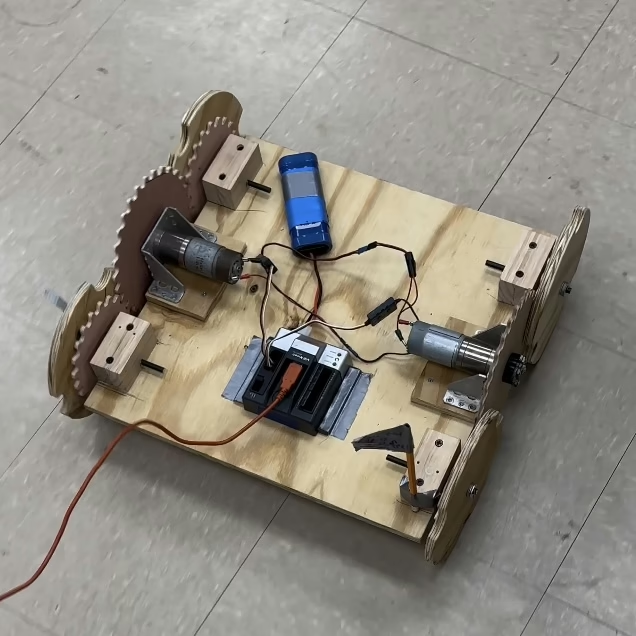
Robotics.
O
ne of the most fun clubs at St. Lukes has always been Robotics. In Robotics, team members work together to construct a robot to market and contest with other robots in a statewide competition known as the “BEST competition.” The robot’s construction is under harsh time constraints. Students must apply concepts from math, engineering, and physics. According to BEST Robotics, the organization that holds these competitions, students also learn skills such as abstract thinking, teamwork, project-management, and leadership. Many students gain an interest in these fields because of Robotics, some even going into related majors after high school. The program is almost entirely student-driven, with mentors there only for supervision and help.
Every year’s contest is themed uniquely, and 2024’s theme is “Low G,” its premise being that “the world is preparing to return to the moon. This time with the intent to stay.” The goal is to “perform critical exploratory tasks and prepare the way for future human habitation.” These tasks include collecting moon rocks, extracting core samples, repairing a collapsed radio antenna, and constructing a habitat site. All this must be done while traversing hilly terrain. These tasks may seem simple on their own, but the subtle differences of each task make building a robot for all of them quite difficult.
The team began with a brainstorming and designing session. How are we going to design a claw using as few servos as possible? Should our wheels include suspension? Can we 3D-print this, or should it be made of wood? Once a rough design was complete, the team moved on to construction. Using a CNC, a device meant to cut complex shapes out of different materials, wheels and gears were carved out of wood and cardboard. A base was made from plywood. The best math students were tasked with calculating each part’s location and the exact blueprint of the robot. Two motors were wired to a control module and battery, before being attached to the wheels. Soon, the robot’s base was fully functional and could be driven with a controller. However, the claw still posed a challenge. One problem encountered was that the design placed too much tension on itself, and the wood frequently snapped. The claw had to be re-made out of a more tensile plastic, and many parts of it were 3D-printed As of the writing of this paper, the robotics team has not yet completed the project, though it is obvious the team’s intellect and creativity will result in an exceptionally competitive robot.
Many students are very passionate about robotics. The team’s captain, Zane West, who first joined robotics in the 6th grade, enjoys the students’ independence at Robotics. “I love the freedom that it gives the students. When students come through the door, they're treated like adults. They’re trusted and valued. They’re given the freedom to understand that what they put in is what they get out.” Ackley Hoffman is also a major component of the team; he spoke about his great appreciation for “the creative environment and the good people who participate.” He has learned a lot since joining too, such as “useful life skills, how to operate machinery, how to cut straight and be a good handyman.” Despite not being an especially prominent or flashy club, robotics is definitely one of the most gratifying.
In conclusion, robotics is not only an educational club but also one of the most fun. Students discover that math and engineering are really not that intimidating when actually applied, and may even go into related fields in their adulthood. They can learn while having a blast. Oliver Lyons described his favorite part of robotics best: “meeting new people, making new friends, building new possibilities.”
